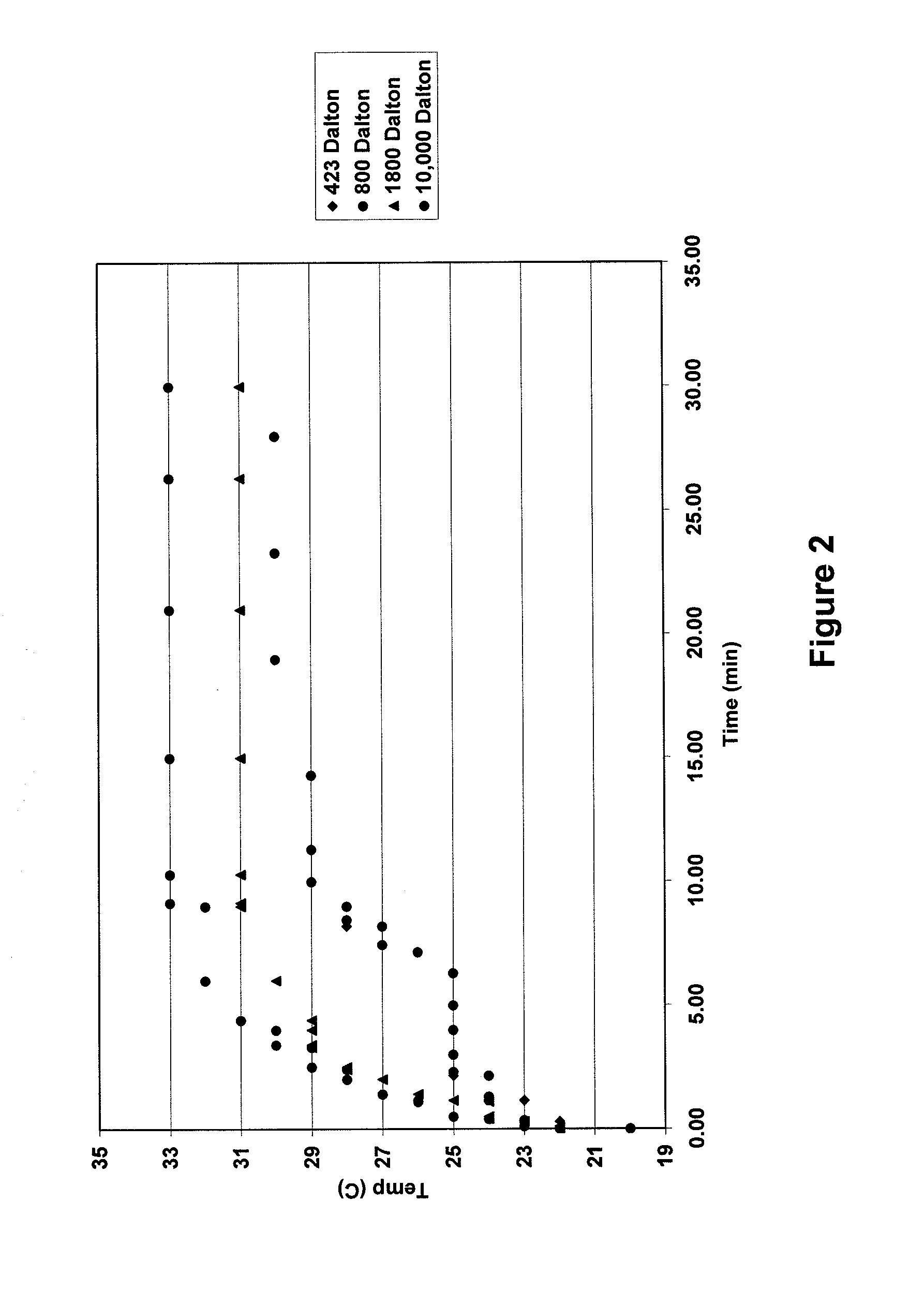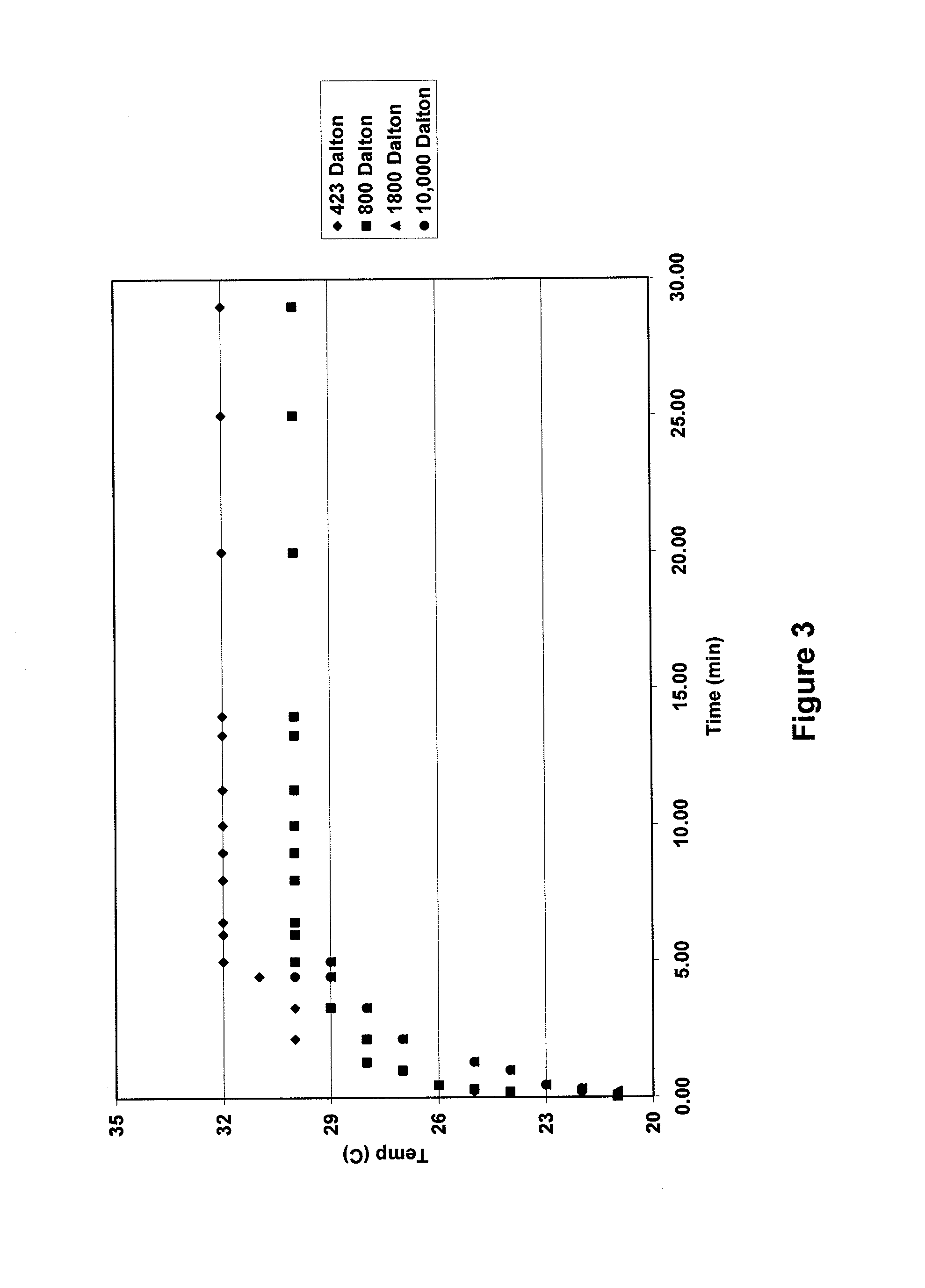Cement products and methods of making and using the same
a technology of cement products and products, applied in the field of cement products and methods of making and using the same, can solve the problems of affecting the quality of life, and affecting the treatment effect of patients, so as to reduce the amount of unreacted starting material, improve the flowability of the mixture, and reduce the effect of reducing or eliminating
- Summary
- Abstract
- Description
- Claims
- Application Information
AI Technical Summary
Benefits of technology
Problems solved by technology
Method used
Image
Examples
example 1
[0121]The following describes the preparation of an acrylic resin-based paste-paste restorative cement product that includes a nano-hydroxyapatite bioactive component according to the invention. The cement product includes two parts. Part A is described in Table 2 and includes the polymerizable resin of the first component. Part B is described in Table 3 and includes the polyamine of the second component. Parts A and B were each formulated as a non-dripping paste-like shear thinning cream. The bioactive component was divided between Parts A and B.
TABLE 2(parts by weight)Glycidyl dimethacrylate (GMA) (Sartomer SR379)58.74Ethoxylated (15) trimethylolpropanetriacrylate5.30(Sartomer SR9035)NanoHydroxyapatite (Angstrom Medica, Inc.)35.96
TABLE 3(parts by weight)Polyethyleneimine (PEI-800)55.0(Aldrich, Cat No.: 408719)NanoHydroxyapatite (Angstrom Medica, Inc.)45.0
[0122]According to the manufacturer, PEI-800 polyethyleneimine has a branched polymer density of about 1.05 g / ml and average mol...
example 2
[0125]The following describes the preparation of another acrylic resin-based paste-paste restorative cement product with a bioactive component according to the invention. The bioactive component includes both nano-hydroxyapatite and nano-hydroxyapatite whiskers ranging in size from 5-10 nm in diameter to 250 nm in length. The cement product includes two parts. Part A is described in Table 4 and includes the polymerizable resin of the first component. Part B is described in Table 5 and includes the polyamine of the second component. Parts A and B were each formulated as a non-dripping paste-like shear thinning cream. The bioactive component was divided between Parts A and B.
TABLE 4(parts by weight)Glycidyl dimethacrylate (GMA) (Sartomer SR379)69.10Ethoxylated (15) trimethylolpropanetriacrylate3.78(Sartomer SR9035)NanoHydroxyapatite whiskers12.40(Angstrom Medica, Inc.)NanoHydroxyapatite (Angstrom Medica, Inc.)14.72
TABLE 5(parts by weight)PEI-800 (Polyethyleneimine, Aldrich Cat No.: 40...
example 3
[0129]The following describes the preparation of an acrylic resin-based paste-paste restorative cement product with a bioactive component that includes nano-hydroxyapatite whiskers ranging in size from 5-10 nm in diameter to 250 nm in length. The cement product includes two parts. Part A is described in Table 6 and includes the polymerizable resin of the first component. Part B is described in Table 7 and includes the polyamine of the second component. Parts A and B were each formulated as a non-dripping paste-like shear thinning cream. The bioactive component was divided between Parts A and B.
TABLE 6(parts by weight)Glycidyl dimethacrylate (GMA) (Sartomer SR379)70.0NanoHydroxyapatite whiskers30.0(Angstrom Medica, Inc.)
TABLE 7(parts by weight)PEI-800 (Polyethyleneimine, Aldrich Cat No.: 408719)52.37NanoHydroxyapatite whiskers (Angstrom Medica, Inc)47.63
[0130]Both Parts A and Part B had fast and excellent dispersion, were highly formable, shapeable, and easily delivered by a syringe ...
PUM
| Property | Measurement | Unit |
|---|---|---|
| molecular weight | aaaaa | aaaaa |
| molecular weight | aaaaa | aaaaa |
| average molecular weight | aaaaa | aaaaa |
Abstract
Description
Claims
Application Information
 Login to View More
Login to View More - R&D
- Intellectual Property
- Life Sciences
- Materials
- Tech Scout
- Unparalleled Data Quality
- Higher Quality Content
- 60% Fewer Hallucinations
Browse by: Latest US Patents, China's latest patents, Technical Efficacy Thesaurus, Application Domain, Technology Topic, Popular Technical Reports.
© 2025 PatSnap. All rights reserved.Legal|Privacy policy|Modern Slavery Act Transparency Statement|Sitemap|About US| Contact US: help@patsnap.com



